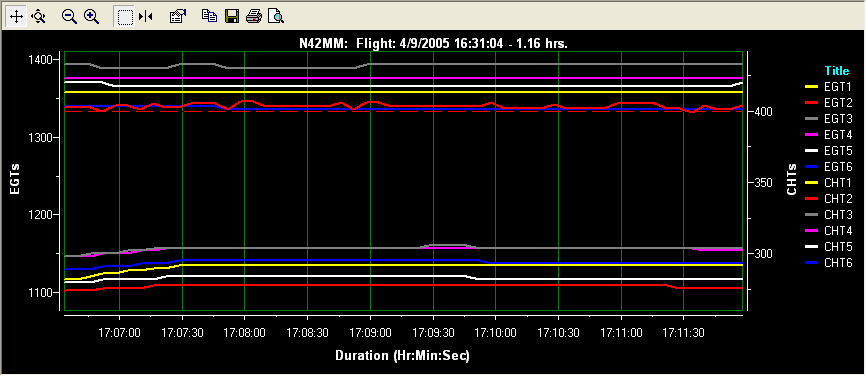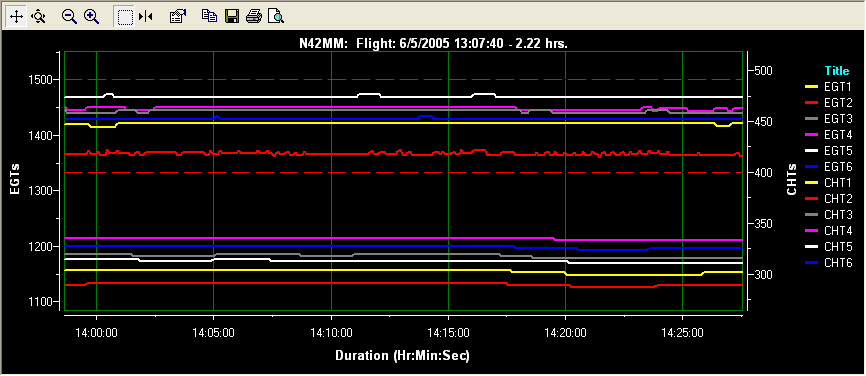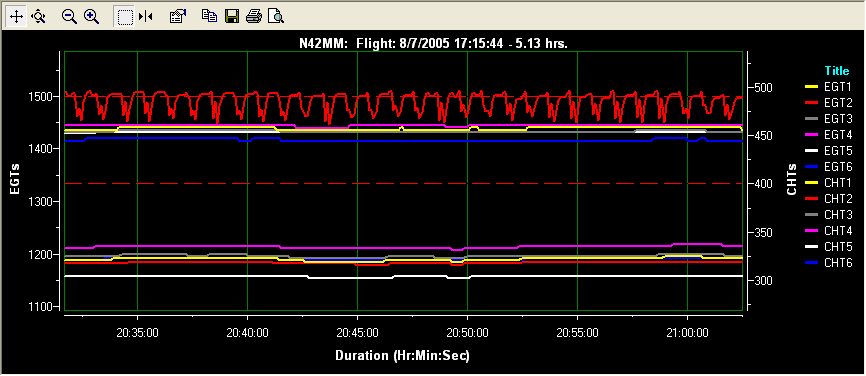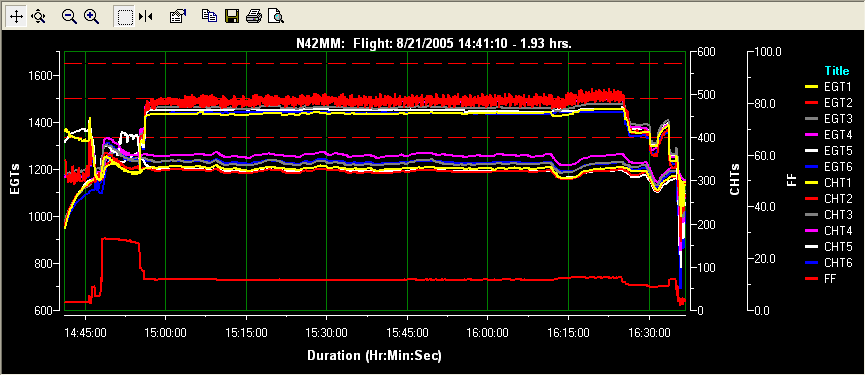|

This narrative is from Beechcraft owner
Elliott S., who documented via his digital engine monitor data downloads the
indications of impending exhaust valve failure in his TCM equipped Bonanza.
Data download graphing credit to
EGViewTM:

1. April 9: no one
would pay too much attention to this data download.

2. June 5: Is this just
a little crud on the exhaust seat of EGT #2 (red)?

3. July 28: No, I don't
think so, but the excursions aren't that big yet.

4. August 7: Would have
done something if I had downloaded this flight.

5. August 21 before
cylinder change. This is what a full flight looks like before the repair -
escaped eating an exhaust valve!

Here's another engine monitor save pirep from
A33 owner John P.:
"My JPI saved my bacon as well! My indications were LOW
(-300deg) EGT on #3 at idle on deck with normal temps during the run-up. At
altitude in cruise #3 EGT would jump up 50deg, caught my attention since I was
in the "normalized" mode, for about ten or so seconds, then it would go back
down to the exact temp as before. This cycle was happening every 5-10 minutes of
the flight. Got on deck...compression test....20/80!! Now I have six new jugs
and one smooth running engine!!"

John
A33
HJO
To me, the morale of this story is that modern
digital engine monitors are extremely useful tools in operating and
troubleshooting our engines.
Instead of the big surprise of Elliott's
engine eating a valve at a very inopportune time, Elliot was able to make a safe
cylinder maintenance intervention on HIS terms.

Elliott's full web narrative can be seen
HERE
See more on TCM Exhaust Valves
HERE
Be a CSOB (avert big expensive things breaking
and causing more financial havoc or a foreseeable engine problem) and put one in
your airplane 
|